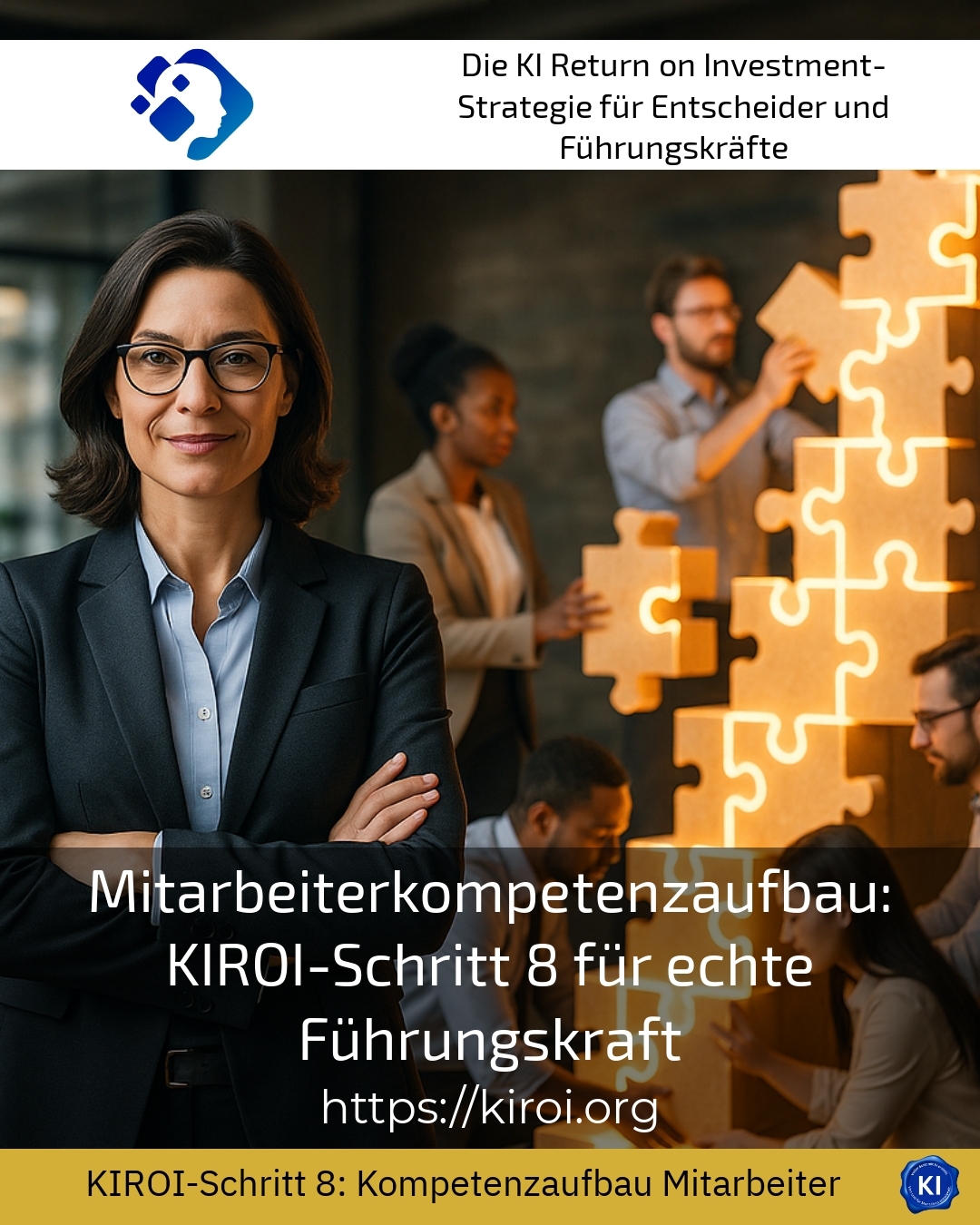The targeted development of employee competences is an essential basis for the sustainable success of modern companies. The eighth KIROI step plays a central role, particularly in the context of comprehensive development programmes. This step helps managers to systematically develop their employees' skills and thus optimally prepare them for future challenges. In this article, you will learn about practical examples of how employee competence development can be organised effectively and what impetus transruption coaching can provide in the process.
Building employee competence as a core task of true leadership
A true manager recognises that the sustainable development of employee skills goes beyond the mere transfer of knowledge. Rather, it is about creating an environment in which learning is linked through application, reflection and targeted support. For example, many companies implement job rotation programmes in which employees work through different tasks and develop new skills as a result. Coaching programmes are also proving to be very effective - for example in the form of personal discussions in which individual potential is recognised and promoted.
A practical example from the automotive industry illustrates this: A supplier has introduced a mixture of on-the-job training and accompanying coaching as part of the eighth KIROI step. Employees voluntarily sign up for projects in which they develop their quality management skills. At the same time, they receive regular feedback from experienced managers. This approach strengthens the development of employee expertise because it is practical and individualised.
Learning platforms are also increasingly being used in the IT sector to supplement classroom training. For example, banks are working with external coaches to develop modules on digital transformation in order to provide employees with the necessary skills for new technologies. This supports both personal development and the company's strategic goals.
BEST PRACTICE with one customer (name hidden due to NDA contract) The mechanical engineering company deliberately introduced mastermind groups. At these meetings, employees regularly presented their own case studies and discussed challenges. This resulted in valuable learning experiences and an intensive exchange that strengthened the employee competence development initiatives in the long term.
KIROI Step 8: Stimulus through transruption coaching for sustainable development
The eighth step of the KIROI model focuses on supporting change processes. Transruption coaching offers valuable methods and impulses to organisational change facilitators in order to actively promote the development of employee competence. This is achieved through targeted questions, reflection exercises and the identification of new perspectives.
For example, a company from the pharmaceutical industry reports that managers obtain employee feedback more frequently after coaching sessions and draw up individual development plans. This support strengthens the sense of responsibility for building competences and employees experience their development as an independent process.
Another example from the service sector illustrates the benefits of transruption coaching: during a change project to introduce new digital tools, managers were supported in dealing with resistance and developing an understanding of the different development speeds. As a result, acceptance improved and the development of employee competences proceeded more smoothly.
In addition, the telecommunications industry has shown that regular coaching sessions also intensively promote social skills in particular, such as the ability to deal with conflict and teamwork. This is essential in order to successfully implement complex projects and retain employees in the long term.
Practical tips for managers on building employee competences
1. encourage targeted learning-by-doing: enable employees to take on new tasks and learn from them.
2. set up regular feedback cycles based on appreciation and constructive development.
3. use coaching or mentoring to discover and promote individual strengths.
4. actively integrate employees in knowledge exchange formats such as mastermind groups or peer learning.
5. work out realistic development goals together that are based on specific company requirements.
Shaping employee competence development sustainably - an indispensable goal
The systematic development of employee competences strengthens the innovative power and competitiveness of companies. The eighth step in the KIROI process enables managers to accompany employees at eye level and thus develop individual potential in the best possible way. Transruption coaching supports this endeavour with valuable impulses that encourage reflection and open up new avenues for action. Practical examples from various industries show how competences can be developed sustainably through practical application, individual coaching and collegial learning formats.
My analysis
Developing employee competences is a process that requires managers to actively and consciously manage. The eighth step of the KIROI model makes it clear that typical development measures such as training alone are not enough. Rather, accompanying coaching approaches and the creation of a climate conducive to learning are crucial. Practice-orientated methods and the targeted use of transruption coaching can prepare employees for future requirements and retain them in the company in the long term. In particular, the combination of individual learning with organisational goal orientation proves to be a success factor.
Further links from the text above:
Successful skills development: 9 tips and 3 strategies [1]
Popular methods for developing the skills of company employees [3]
Expertise management: definition and benefits for companies [5]
For more information and if you have any questions, please contact Contact us or read more blog posts on the topic Artificial intelligence here.















